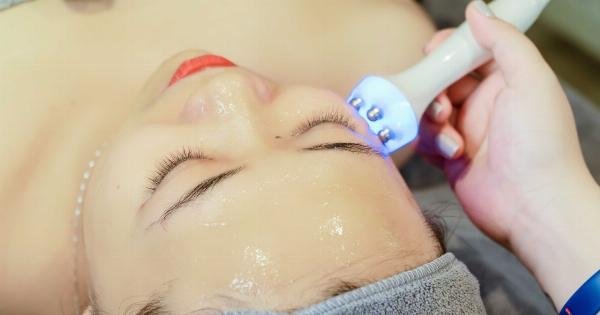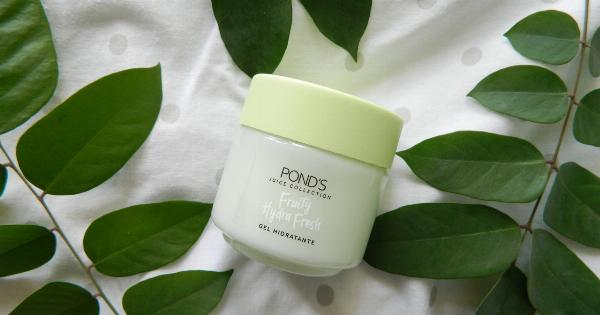Having healthy, radiant skin is a goal for many individuals, and facial exfoliation plays a crucial role in achieving that desired glow. Our skin is constantly renewing itself, shedding old skin cells and generating new ones.
However, due to various factors such as age, pollution, and lifestyle habits, this natural process can become sluggish, leading to a dull, lackluster complexion. Regular facial exfoliation helps to address these concerns and promote a brighter, smoother, and more youthful appearance.
In this article, we will explore the benefits of facial exfoliation and why it should be an essential part of your skincare routine.
The Science Behind Exfoliation
To understand the importance of facial exfoliation, it’s essential to delve into the science behind the process. Our skin has several layers, and the topmost layer is called the epidermis.
The epidermis is comprised of multiple cell layers, with the outermost layer consisting of dead skin cells. These dead skin cells can accumulate, leading to a range of concerns such as clogged pores, acne breakouts, and a dull complexion.
Exfoliation works by removing this layer of dead skin cells, allowing the healthier, more vibrant skin cells to come to the surface. There are two primary methods of exfoliation: physical and chemical.
Physical Exfoliation
Physical exfoliation involves the use of granular substances or tools that physically scrub away the dead skin cells. This method of exfoliation includes products such as scrubs, brushes, and facial cleansing devices.
The physical action helps to dislodge the dead cells, unclog pores, and promote blood circulation.
When engaging in physical exfoliation, it’s important to be gentle and avoid excessive pressure or harsh products, as it can lead to skin irritation or micro-tears.
Opt for products with finely ground particles or soft bristles to ensure a gentle, effective exfoliation without damaging the skin.
Chemical Exfoliation
Chemical exfoliation, as the name suggests, utilizes certain chemicals to dissolve the bonds between dead skin cells, allowing them to slough off more easily.
This method typically involves the use of alpha hydroxy acids (AHAs), beta hydroxy acids (BHAs), enzymes, or retinoids.
AHAs, such as glycolic or lactic acid, are water-soluble acids derived from fruits or milk. They work by breaking down the “glue” holding the dead skin cells together, helping to reveal a brighter complexion.
BHAs, like salicylic acid, are oil-soluble acids that can penetrate the pores more deeply, making them particularly effective for individuals with acne-prone or oily skin.
Enzyme exfoliants are often derived from natural sources such as papaya or pineapple. These enzymes gently dissolve the dead skin cells, making them suitable for individuals with sensitive skin.
Retinoids, which are derivatives of vitamin A, have both exfoliating and anti-aging properties. They work by accelerating cell turnover, promoting the production of collagen, and reducing the appearance of fine lines and wrinkles.
The Importance of Facial Exfoliation
Now that we understand how exfoliation works, let’s delve into why it is crucial for achieving and maintaining healthy, glowing skin.
1. Removal of Dead Skin Cells
As mentioned earlier, exfoliation helps to eliminate the layer of dead skin cells that accumulate on the surface of the skin. By removing these cells, you unclog your pores, prevent acne breakouts, and allow your skin to breathe more easily.
The result is a smoother, clearer complexion that reflects light more evenly, giving your skin a radiant glow.
2. Prevention of Acne and Breakouts
Exfoliating regularly helps to keep your pores clear of dirt, oil, and other impurities that can contribute to acne and breakouts.
By preventing the buildup of these substances, you reduce the likelihood of experiencing clogged pores and the subsequent inflammation and infection that can lead to blemishes, pimples, and blackheads.
3. Reduction of Hyperpigmentation
Hyperpigmentation refers to areas of the skin that appear darker than the surrounding skin due to an excess production of melanin.
Exfoliation can help to fade these dark spots by encouraging cell turnover and allowing fresher, more evenly pigmented skin cells to come to the surface. Regular exfoliation can visibly diminish the appearance of hyperpigmentation, leading to a more even complexion.
4. Improved Absorption of Skincare Products
Regular exfoliation enhances the absorption and efficacy of your skincare products. By removing the barrier of dead skin cells, the active ingredients in your moisturizers, serums, and treatments can penetrate more deeply and effectively into the skin.
This ensures that you get the maximum benefits from your skincare routine, whether it’s hydration, antioxidant protection, or anti-aging benefits.
5. Increased Collagen Production
Collagen is the protein responsible for maintaining the elasticity and firmness of your skin. As we age, our collagen production naturally declines, leading to sagging skin and the formation of wrinkles.
Exfoliation, particularly with retinoids, encourages collagen synthesis, helping to plump up the skin and reduce the appearance of fine lines and wrinkles. Regular exfoliation can thus contribute to a more youthful, radiant complexion.
6. Enhanced Blood Circulation
When you exfoliate your skin, you stimulate blood circulation in the underlying layers of the skin. Improved blood flow nourishes the skin cells and promotes a healthy, vibrant complexion.
Additionally, the increased circulation can also give you a temporary rosy flush, contributing to a fresh, natural glow.
7. Stress Relief and Relaxation
Facial exfoliation is not only beneficial for your skin but also provides a moment of relaxation and stress relief. The physical act of massaging the exfoliant onto your skin can be soothing and therapeutic.
It allows you to dedicate time to self-care and indulge in a skincare ritual that promotes mental well-being along with physical benefits.
How Often Should You Exfoliate?
The frequency of facial exfoliation depends on various factors such as skin type, sensitivity, and the exfoliation method used. As a general guideline, it is recommended to exfoliate 1-3 times per week.
However, if you have sensitive or dry skin, it is advisable to start with less frequent exfoliation and adjust based on the skin’s response.
It’s crucial to listen to your skin and observe how it reacts to exfoliation. If you notice any signs of irritation, redness, or excessive dryness, it might be an indication to reduce the frequency or switch to a gentler exfoliation method.
Conclusion
Facial exfoliation is a vital step in any skincare routine if you aspire to achieve and maintain a glowing complexion.
It promotes the removal of dead skin cells, prevents acne breakouts, reduces hyperpigmentation, improves product absorption, boosts collagen production, enhances blood circulation, and offers moments of relaxation. By incorporating regular exfoliation into your skincare regimen and finding the method that suits your skin type, you can unveil a luminous, healthy complexion that radiates confidence and beauty.




























